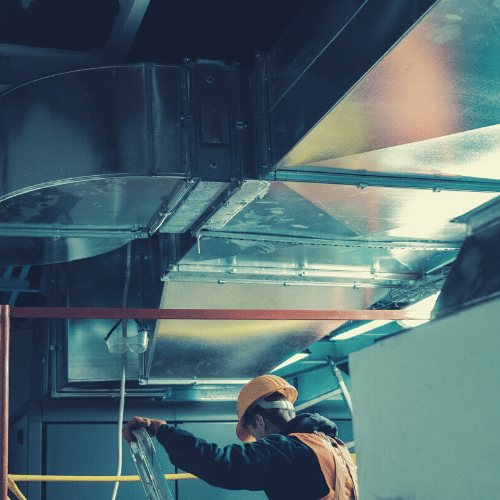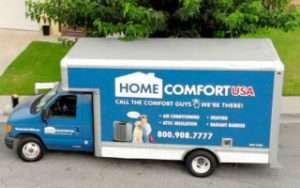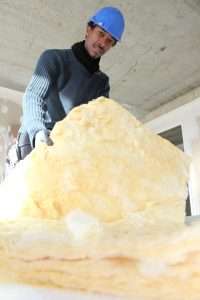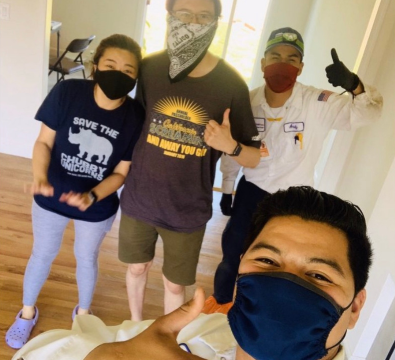Are you a Southern California homeowner looking to improve your home’s energy efficiency and reduce your energy bills? If so, you may want to consider radiant barrier insulation. This type of insulation is gaining popularity for its ability to reflect heat and keep your home cool in the hot California sun. In this blog post, we will explore what radiant barrier insulation is, how it differs from other types of insulation, the installation process, and why it may be the right choice for your home.
What Is Radiant Barrier Insulation, and How Does It Stand Apart?
Radiant barrier insulation takes a different approach to keeping your home comfortable by focusing on the sun’s radiant heat. While most types of insulation work by slowing down heat flow through materials (think of how a thick blanket traps warmth), radiant barrier insulation acts like a mirror. It’s designed to reflect the radiant heat away from your home, rather than just slowing it down. This reflective capability is thanks to materials commonly used in radiant barriers, such as aluminum, which is highly effective at bouncing back the sun’s rays.
This method of heat control is particularly advantageous in sunny locales like Southern California, where the sun beats down relentlessly, especially during the summer months. Traditional insulation methods can absorb and eventually let through some of that heat, but radiant barriers maintain their reflective properties, ensuring that much of the sun’s energy doesn’t enter your attic and, subsequently, your living spaces. This unique approach to insulation means that your home stays cooler without overburdening your air conditioning system, setting radiant barrier insulation apart in the world of home temperature management.
Perforated vs. Unperforated Radiant Barriers – Making the Right Choice
Navigating the choice between perforated and unperforated radiant barriers is an essential step toward optimizing your home’s energy efficiency. Perforated radiant barriers are designed with small holes that allow moisture to pass through, helping to prevent the accumulation of condensation which can lead to mold and mildew. This option is particularly beneficial in areas where humidity is a concern, maintaining the integrity of your insulation while still reflecting the sun’s radiant heat.
On the other hand, unperforated radiant barriers offer a solid sheet of reflective material, creating a more robust barrier against heat transfer. Without perforations, this type provides an uninterrupted path of resistance to radiant heat, making it a powerful tool in keeping your home cooler. This option might be preferable in drier climates where moisture accumulation is less of a concern but where the relentless sun can significantly impact your home’s temperature and comfort.
Choosing between perforated and unperforated radiant barriers depends on your specific home environment and climate considerations. Understanding these differences enables you to tailor your insulation approach to not only enhance your home’s energy efficiency but also protect its structural integrity. Opting for the right type of radiant barrier ensures you strike the perfect balance between combating heat and managing moisture, a crucial decision in the pursuit of a cooler, more energy-efficient home.
The Radiant Barrier Installation Process
Embarking on the installation of radiant barrier insulation may seem like a daunting task, but with a clearer understanding, you’ll see it’s quite manageable, especially with professional help from Home Comfort USA. The process generally involves strategically placing the radiant barrier in your attic, which is a key battleground in the fight against heat. For those choosing reflective aluminum material, it can either be affixed directly to the underside of the roof rafters or laid atop your existing attic floor insulation.
This placement is critical as it allows the barrier to reflect the sun’s rays before they have a chance to heat up the air inside your attic and, by extension, your home. When professionally installed, the barrier is meticulously secured, ensuring that every square inch acts as a shield against heat. For homeowners opting for a perforated barrier, this step also includes taking measures to prevent moisture buildup, a consideration that safeguards your home’s health in addition to its temperature.
The beauty of this installation process lies in its simplicity and effectiveness. However, the importance of precision cannot be overstated—missed spots or improperly secured edges can significantly diminish the barrier’s effectiveness. That’s why enlisting the expertise of a professional from Home Comfort USA not only simplifies the process but maximizes your investment, ensuring your radiant barrier performs at its best to keep your home cool and comfortable.
The Energy-Saving Benefits of Radiant Barrier Insulation
Radiant barrier insulation stands out in the realm of energy-efficient home solutions, particularly for its prowess in tackling the relentless heat that Southern California summers are known for. By acting as a reflective shield, this innovative insulation type directly addresses the challenge of radiant heat from the sun, which can significantly contribute to indoor warmth and, subsequently, high energy bills.
With radiant barrier insulation installed, a substantial amount of this heat is bounced back, rather than being absorbed by your home. This reflective process reduces the thermal load on your air conditioning system, allowing it to run less frequently and more efficiently during those peak heat hours. The result is a noticeable decrease in energy consumption, which translates into lower energy bills for homeowners.
Additionally, the reduced strain on your HVAC system can extend its lifespan, providing long-term savings beyond just monthly utility costs. By choosing radiant barrier insulation, homeowners not only enhance their comfort during the hot months but also invest in a solution that continues to pay dividends in energy savings year after year.
Why Professional Inspection Is Key Before Installation
Before leaping into the transformative world of radiant barrier insulation, the wisdom of a professional HVAC inspection from Home Comfort USA cannot be overstated. This pivotal step isn’t just about ticking a box; it’s about tailoring the installation to your home’s unique blueprint. Every home has its own set of intricacies—from attic size and ventilation status to existing insulation conditions. An HVAC professional brings a trained eye to these aspects, spotting potential challenges and opportunities that might not be obvious at first glance. They can provide invaluable advice on whether your home’s structure is a good candidate for radiant barrier insulation or if modifications are needed to maximize efficiency.
Moreover, they’ll assess how this type of insulation fits within your broader home energy system, ensuring a cohesive approach to energy savings. This isn’t merely a precaution—it’s a roadmap to achieving the very best from your radiant barrier insulation, customized to your home’s needs. Trusting in a professional inspection lays the groundwork for a smarter, more efficient home.
The Critical Importance of Professional Installation
Embarking on a radiant barrier insulation project comes with its fair share of nuances and technicalities. It’s here that the expertise of professional installers from Home Comfort USA shines brightest. They bring a wealth of knowledge and a keen eye for detail to the table, attributes that are indispensable in navigating the complexities of a successful installation. A Home Comfort USA pro installer not only ensures that your radiant barrier is affixed with precision but also that it is optimally positioned to maximize heat reflection. This is no small feat, considering the myriad factors at play, from the type of barriers used (perforated or unperforated) to the specific layout of your attic.
Home Comfort USA’s professional touch goes beyond mere installation; it encompasses a holistic understanding of how radiant barrier insulation integrates with your home’s overall energy system. They’ll take measures to avoid common pitfalls such as improper sealing or coverage gaps, which could otherwise undermine the insulation’s effectiveness. Plus, their experience enables them to foresee and mitigate potential issues before they escalate, saving you time, money, and headaches in the long run.
In essence, opting for professional installation with Home Comfort USA is not just about getting the job done—it’s about getting the job done right. It’s an investment in the longevity of your home’s energy efficiency and in ensuring that every square inch of your radiant barrier works tirelessly to keep your home cool and your energy bills in check.
Final Thoughts – Is Radiant Barrier Insulation Right for You?
Wrapping up our radiant barrier insulation exploration, it’s clear this innovative solution has a lot to offer Southern California homeowners striving for a cooler, more energy-efficient abode. The unique qualities of radiant barrier insulation, capable of reflecting rather than absorbing the sun’s relentless rays, position it as an intriguing alternative to traditional insulation types.
As you consider the possibility of integrating this technology into your home, remember that every home has its nuances, and ensuring your insulation choice complements these characteristics is key to achieving optimal results. Consulting with an HVAC professional from Home Comfort USA can provide clarity and confidence as you navigate this decision, offering insights tailored to your specific home environment.
And should you decide to proceed, professional installation becomes the linchpin in unlocking the full potential of radiant barrier insulation, promising not just immediate comfort but lasting energy savings. Give Home Comfort USA a call or book an appointment online today.






